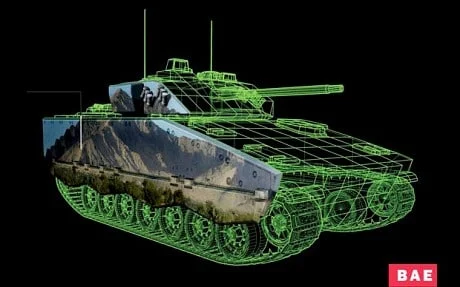Earlier this year, we reported on a “stealth overcoat” designed to make tanks invisible to radar and thermal imaging device. Six months later, the technology is closer to becoming a reality with a tentative launch date set for just five years from now.
To create a stealth overcoat, the British military would apply electronic sensors to a tank’s hull that project images of the surrounding environment onto the tank itself.
Dubbed “electronic ink,” the technology is certainly more versatile for varied environments (think arctic or desert) compared to the standard issue green and khaki camouflage.

The technology’s creators, BAE Systems, hopes that this once concept born as part of the Future Protected Vehicle program will soon become a reality.
The defense company even mentioned the technology could be beneficial to the British Army fighting in Southern Afghanistan.
What makes the stealth overcoat program even cooler is BAE Systems’ goal to leverage the technology for stealth manned and unmanned battlefield robots.
These robots could go from desert surrounds to tropical rain forests and stay completely undetectable, perfect for hostile areas or to clear minefields.
BAE also hopes that its technology will help limit causalities in other ways beyond stealthiness.
Currently, 80% of US causalities are attributed to insurgents targeting fuel supplies coming in and out of Helman.
By developing a vehicle with tougher transparent armor, it hopes to protect the troops within.
Another development is biometric integration, which uses electronic scanners to hone in on suspicious targets or behavior.
Hisham Awad, the head of the Future Protected Vehicle project said: “The trick here is to use machines to do what they are best at (and humans are not) – ploughing very quickly through dull, repetitive data to strip out the overwhelming bulk which is of no use and would take a long time and enormous human resources to process. Then you can quickly bring human intelligence to bear where it excels – making life-or-death decisions based on ‘real time’ information on suspicious activity flagged up by the machines.”
Perhaps this is something that TSA should take into account when scanning crowds for suspicious behavior.
(Via Telegraph)






